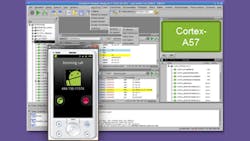Figure 1. Synopsys Virtualizer Development Kit (VDK) provides a virtual rendition of a hardware design allowing more detailed debugging as well as software access to the system before real hardware is available.
Synopsys Virtualizer Development Kit (VDK) provides designers with a way to quickly create and distribute virtual renditions of their final hardware. It helps shorten the design cycle providing programmers with a virtual platform before they can get their hands on the real stuff. It also provides advanced debugging and diagnostic tools that can address key issues such as power management (see Kit Generates Virtual Platforms With Power Debugging Support).
The latest version (Fig. 1) handles the range of Arm architectures including the new 64-bit, ARMv8 platforms that include the Arm Cortex-50 family (see Delivering 64-Bit Arm Platforms) as will as Arm's big.LITTLE configurations (see Little Core Shares Big Core Architecture)
Figure 1. Synopsys Virtualizer Development Kit (VDK) provides a virtual rendition of a hardware design allowing more detailed debugging as well as software access to the system before real hardware is available.
The latest support delivers access to the ARMv8 architecture a year before hardware will be available. Vendors can create VDK SoC designs for their developers to allow them to start software development now. This is important as programmers move from ARMv7 to ARMv8 platforms. Upward compatibility is always an issue of details and the virtual platforms allow programmers to work with the correct details now.
Synopsys' latest supports Linux out-of-the-box. It can handle single and multicore designs including the big.LITTLE mixed core architectures. Typically virtual designers can build on reference virtual prototypes and extend them by adding custom transaction-level models.
Developers actually have better access to the insides of a system with a virtual model that is not limited by the JTAG interface found on real hardware. Timing and power consumption details are readily available if programmers need this information. The advantages in development and debugging often lead developers into using the virtual platforms even after the real hardware is available.
About the Author
William G. Wong
Senior Content Director - Electronic Design and Microwaves & RF
I am Editor of Electronic Design focusing on embedded, software, and systems. As Senior Content Director, I also manage Microwaves & RF and I work with a great team of editors to provide engineers, programmers, developers and technical managers with interesting and useful articles and videos on a regular basis. Check out our free newsletters to see the latest content.
You can send press releases for new products for possible coverage on the website. I am also interested in receiving contributed articles for publishing on our website. Use our template and send to me along with a signed release form.
Check out my blog, AltEmbedded on Electronic Design, as well as his latest articles on this site that are listed below.
You can visit my social media via these links:
- AltEmbedded on Electronic Design
- Bill Wong on Facebook
- @AltEmbedded on Twitter
- Bill Wong on LinkedIn
I earned a Bachelor of Electrical Engineering at the Georgia Institute of Technology and a Masters in Computer Science from Rutgers University. I still do a bit of programming using everything from C and C++ to Rust and Ada/SPARK. I do a bit of PHP programming for Drupal websites. I have posted a few Drupal modules.
I still get a hand on software and electronic hardware. Some of this can be found on our Kit Close-Up video series. You can also see me on many of our TechXchange Talk videos. I am interested in a range of projects from robotics to artificial intelligence.

